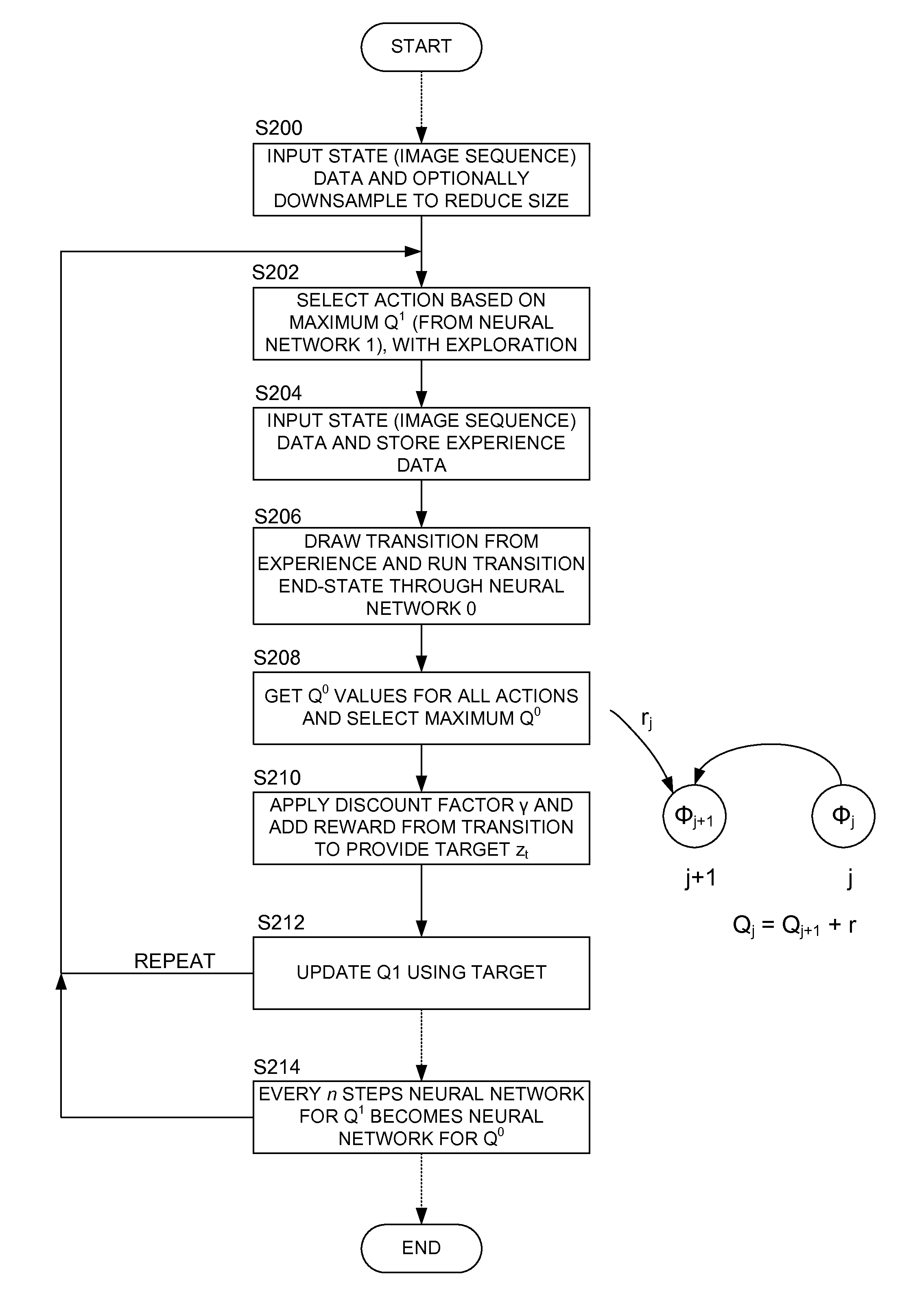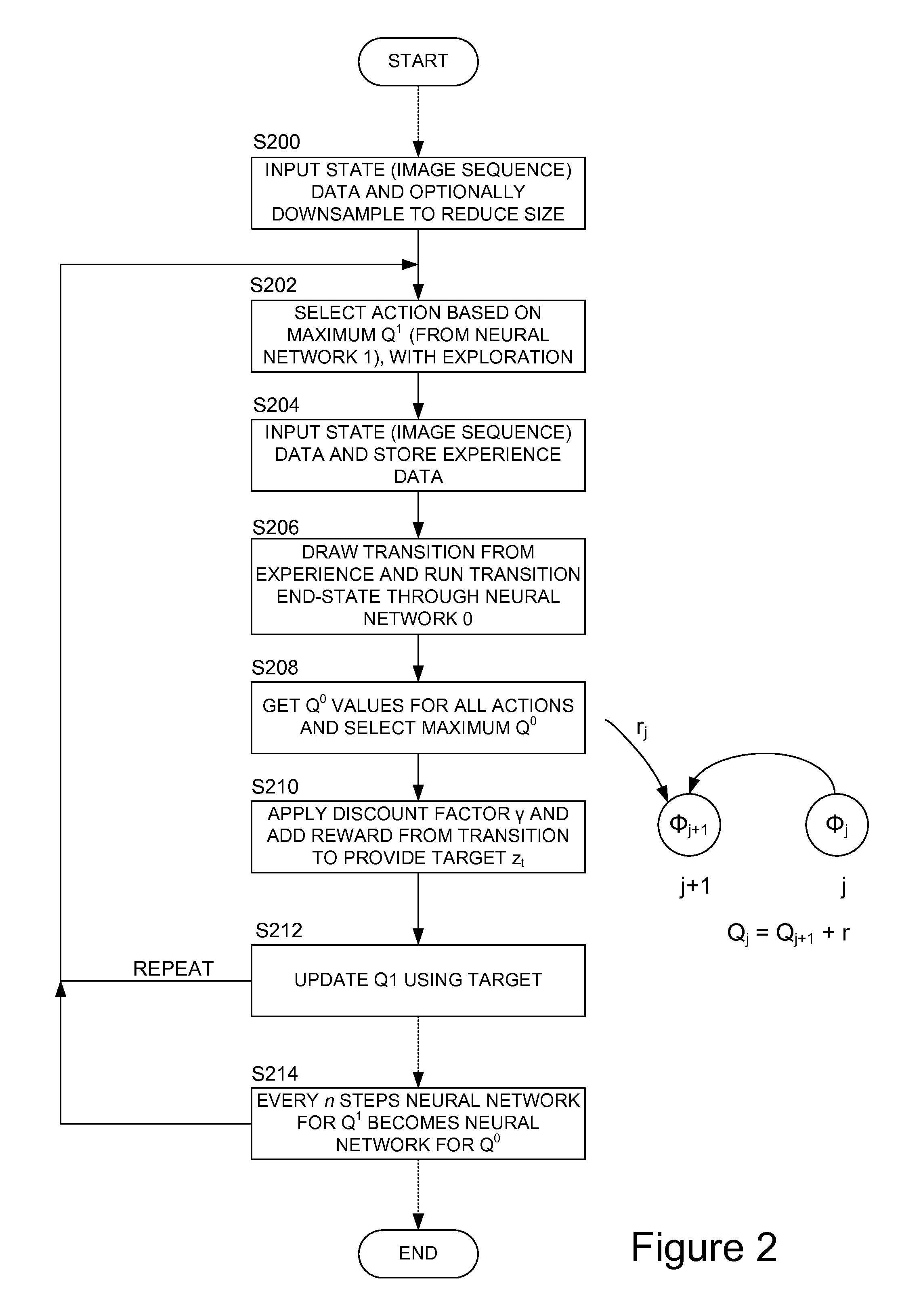Methods and apparatus for reinforcement learning
a reinforcement learning and apparatus technology, applied in the field of reinforcement learning methods and apparatuses, can solve the problems of not accepting visual inputs, early attempts to follow up on td-gammon were relatively unsuccessful, and methods that do not work well in chess, go and checkers, etc., to achieve the effect of reducing computation involved in training the second neural network, facilitating scaling to very large data sets, and effectively continuously updating
- Summary
- Abstract
- Description
- Claims
- Application Information
AI Technical Summary
Benefits of technology
Problems solved by technology
Method used
Image
Examples
Embodiment Construction
[0046]We will describe a technique which connects reinforcement learning algorithm to a deep neural network, such that data can be efficiently pumped into the algorithm using stochastic gradient updates, directly from raw RGB pixel images. To that end an online implementation of the Q-learning algorithm with an experience replay memory is described, that makes it possible to train a neural network with stochastic gradient updates. (Here “deep neural network” is used to refer to a neural network with more than one hidden layer).
[0047]In order to demonstrate the power of the approach Atari™ 2600 video games from the Arcade Learning Environment “The arcade learning environment: An evaluation platform for general agents”, arXiv preprint arXiv:1207.4708, 2012, Bellemare, Marc G and Naddaf, Yavar and Veness, Joel and Bowling, Michael are used as a test bed. These games provide an interesting challenge for reinforcement learning because they were designed to be challenging for humans and h...
PUM
 Login to View More
Login to View More Abstract
Description
Claims
Application Information
 Login to View More
Login to View More - R&D
- Intellectual Property
- Life Sciences
- Materials
- Tech Scout
- Unparalleled Data Quality
- Higher Quality Content
- 60% Fewer Hallucinations
Browse by: Latest US Patents, China's latest patents, Technical Efficacy Thesaurus, Application Domain, Technology Topic, Popular Technical Reports.
© 2025 PatSnap. All rights reserved.Legal|Privacy policy|Modern Slavery Act Transparency Statement|Sitemap|About US| Contact US: help@patsnap.com



